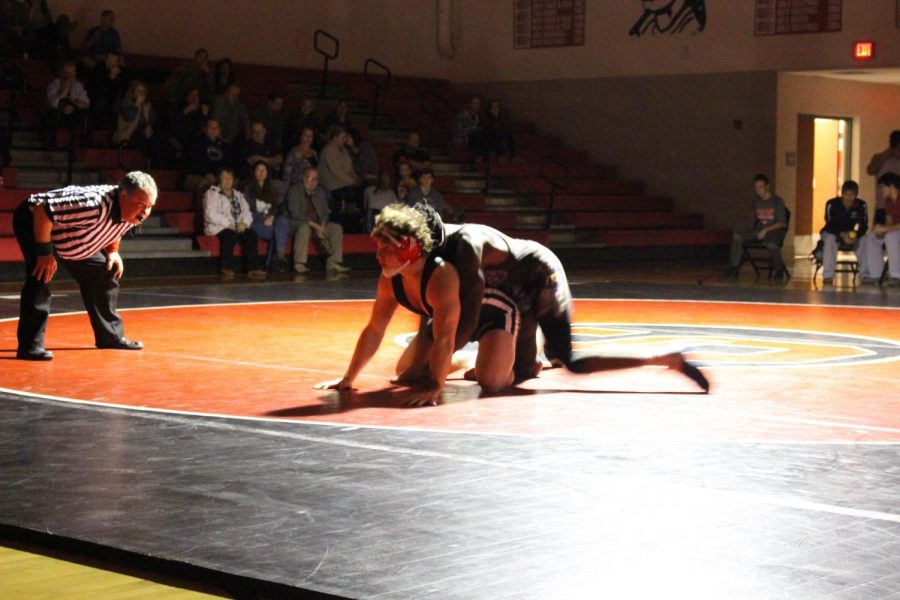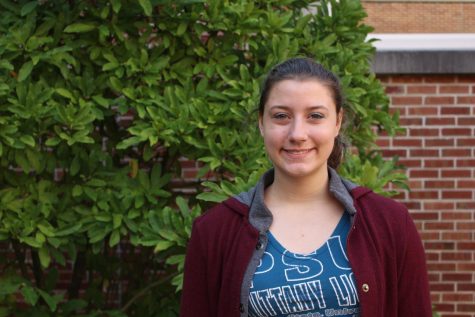Wrestlers Keep Weight-Loss Safe
February 27, 2018
Today is finally the day. Your coach has been pushing you, and you’ve been cutting weight all week to make it into your weight class. You nervously wipe your sweaty hands on your pants when your name is called.
Today is the day of the weigh-in.
According to a study, 25-67% of high school and collegiate wrestlers partake in weight cutting and rapid weight loss techniques.
Jacob Silliman, a junior and 4th-year wrestler, recalls one of the times he has had to lose weight to meet a weight-class requirement.
“It was last year, and I came in and I was 3 pounds over because the color guard was selling all their chocolate bars. They were really good, so I bought a bunch of them and ate them, so I was 3 pounds over. I had to lose a lot of weight that day,” said Silliman.
Wrestlers have gone to extreme measures to lose weight in a short amount of time.
Silliman continues on to explain how he cut 3 pounds in just a few hours.
“I had about 3 or 4 hours to lose the weight, so what I did was I put on a bunch of jackets and sat in the back of the bus next to the heater, and I was spitting into a cup. I had a bunch of gum in my mouth, so I was building up saliva. Yeah, it was pretty disgusting,” said Silliman.
Other methods of weight loss include taking laxatives or diuretics to lose a few pounds of water weight. Though doing so is against team rules, some wrestlers find it necessary.
Senior Erik Younkin drops around 17 pounds every year before the season starts so that he can wrestle in the 138 lb weight class. One time, he forgot about a meet, so he had to lose 12.5 lbs in 2 days
“It’s very unhealthy, and I think any of us will admit that…, [but] it’s necessary because everyone is doing it. If you don’t, you’ll be smaller than everyone else in your weight class,”
Athletic director and former wrestling coach Brad Keeney wrestled throughout high school and college, so he understands the pressure and risk that the students face.
“I usually had to lose a pound or two pounds for a match in, like, an hour,” said Keeney.
“…Back when I was growing up, you wanted to be as big as possible in the smallest weight class possible, because you were stronger. Back then, weigh-ins were held a little bit different. You actually weighed in the day before, so you had all night to get your strength back, where now, it’s one hour before. You have to weigh in one hour prior to wrestling. You don’t have a whole lot of time to rehydrate; you don’t have time to get your strength back. ” said Keeney.
Many new measures have been put into place in order to keep wrestlers safe when they’re cutting weight. Athletic trainers closely monitor students to make sure they don’t lose more weight than is healthy.
“Now today, they’re on a very scripted plan, so they put in what’s called the OPC (Optimal Performance Calculator) which is an online platform where every time they weigh in, it calculates how much weight they’re allowed to lose that week. You’re only allowed to lose 1.5% of your body fat. It does a good job of keeping kids safe,” said Keeney. “And a little background, back around, I wanna say the early 2000s, late 90’s, there were a couple years where some wrestlers were dying, and it had to do with dehydrating too much, which was the reason they put that system (OPC) in place. Since then, the kids have been safe.”
In addition, fundamental attitudes about cutting weight in the sport of wrestling have shifted to become more realistic and safe.
“Now, the other piece to this… is that the philosophies have kinda changed in wrestling,” said Keeney. “So the positive change, I think [that the] University of Michigan started that push where you wrestle where you feel the best, you don’t wrestle where you look the biggest, you know what I mean? So you’re seeing more and more these days that kids aren’t cutting weight like they used to, which is the way it should be.”
Keeney stresses that the sport isn’t about weight loss, but teaching students how to safely lose weight throughout their wrestling careers sets them on a healthy path into adulthood.
“Teach kids to be healthy, teach them discipline, try to get them as lean as you can, but at the end of the day you’re trying to teach these kids to work hard and how to push through stuff. Weight loss can’t be your focus.”





